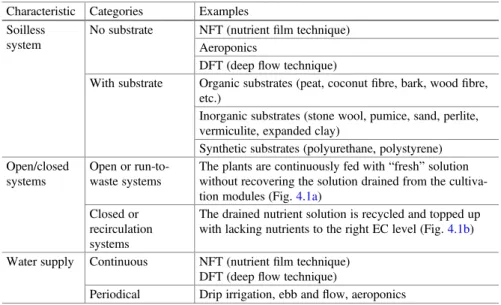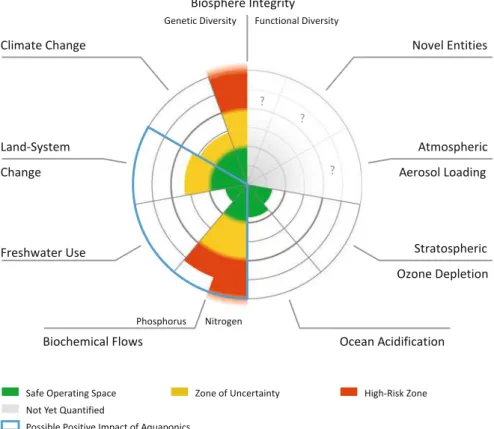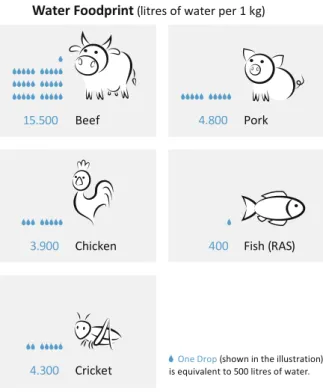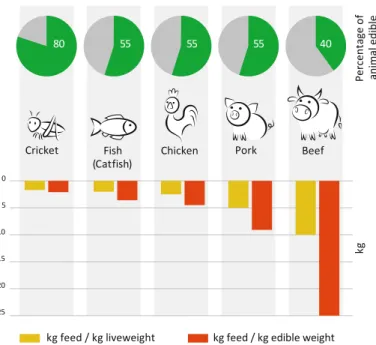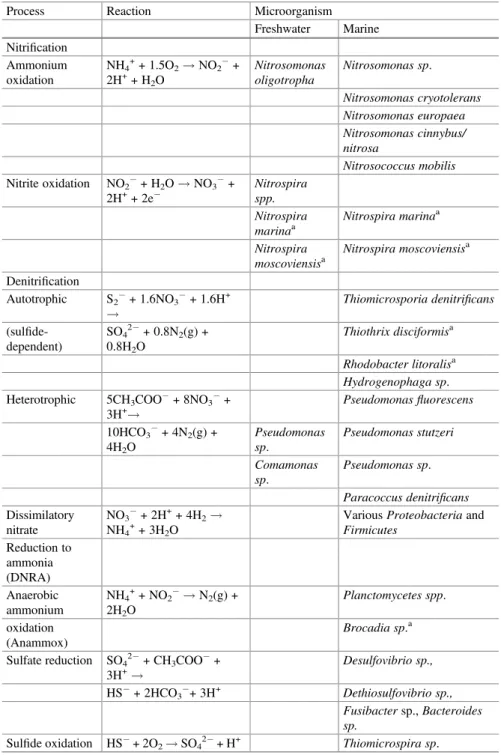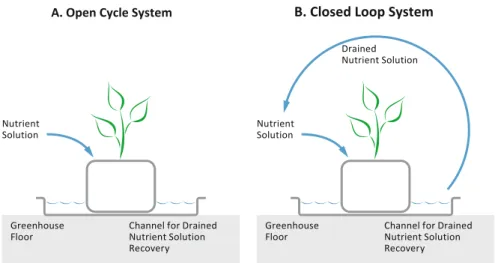Alyssa Joyce Alyssa is an Assistant Professor in the Department of Marine Sciences (Aquaculture) at the University of Gothenburg, Sweden. She was one of the Swedish representatives in the EU COST network for aquaponics and is a partner in the CITYFOOD project, which develops aquaponics technology in urban environments.
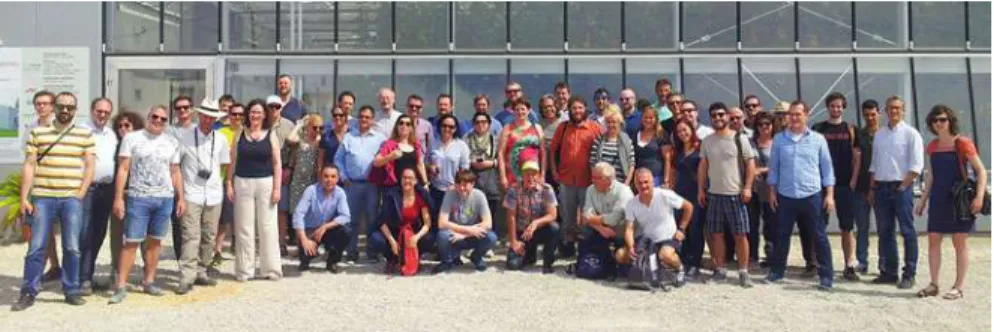
Introduction
In such traditional systems, it is necessary to compromise with the conditions of both subsystems in terms of pH, temperature and nutrient concentrations (Goddek et al. 2015; Kloas et al. 2015) (see ch. 7). Utilization of sludge tanks is another important way to maximize efficiency through solid waste recycling (Emerenciano et al.2017; Goddek et al. 2018; Monsees et al.2015).
Supply and Demand
Recent studies show that current trends in agricultural yield improvements will not be sufficient to meet the expected global food demand in 2050, and these further suggest that an expansion of agricultural land will be necessary (Bajželj et al. 2014). All these factors result in the global food system losing its resilience and becoming increasingly unstable (Suweis et al. 2015).
Scienti fi c and Technological Challenges in Aquaponics
In Chapter 2, we also discuss in more detail the range of environmental challenges that aquaponics can help solve. Such challenges are further explored in Chapter 5, where we discuss in more detail how innovation in aquaponics can result in (a) increased space utilization efficiency (reduced costs and materials, maximization of land use); (b) reduced input resources, e.g.
Economic and Social Challenges
However, producing fresh and high quality products is a real challenge and therefore a luxury in many parts of the world. But as mentioned earlier, high quality and fresh produce is a scarce resource in many parts of the world and the long distance transportation of goods i.e.
The Future of Aquaponics
Aquaponics is an agricultural technology that has advanced rapidly since its first exploits in the last years of the twentieth century and the first decades of the twenty-first century. Weber CL, Matthews HS (2008) Food miles and the relative impact of food choices on climate in the United States.
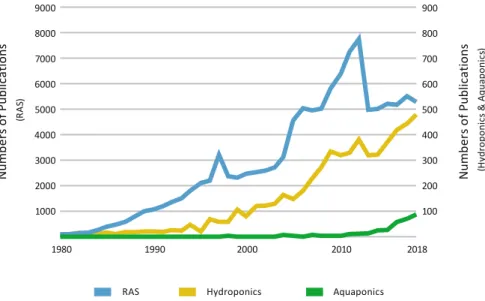
Introduction
In this chapter, we discuss a number of current challenges in relation to food security, focusing on resource constraints and ways that new technologies and interdisciplinary approaches such as aquaponics can help address the water-food-energy nexus in relation to the UN's Sustainable Development Goals.
Food Supply and Demand .1 Predictions
Analysis of agrobiodiversity consistently shows that high- and middle-income countries obtain a variety of foods through national or international trade, but this also means that food production and diversity are disconnected and therefore more vulnerable to disruptions in supply lines than in low-income countries, where most food is produced nationally or regionally (Herrero et al. 2017). In addition, as farm sizes increase, the diversity of crops, especially for crops belonging to food groups with high nutritional value (vegetables, fruits, meat), tends to decrease in favor of cereals and legumes, which again risks limiting the local and regional availability of a variety of different food groups (Herrero et al. 2017).
Arable Land and Nutrients .1 Predictions
Aquaponics and Nutrients
In certain aquaponic designs, bacterial biomass can also be utilized as feed, for example, where biofloc production makes aquaponic systems increasingly self-sustaining (Pinho et al. 2017). In decoupled aquaponic systems, aerobic or anaerobic bioreactors can also be used to treat sludge and recover significant macro- and micronutrients in bioavailable forms for subsequent use in hydroponic production (Goddek et al. 2018) (see ch.
Pest, Weed and Disease Control .1 Predictions
Control of Pests, Weeds and Diseases
Furthermore, the use of antimicrobials and antiparasitics is generally discouraged, as it can be harmful to the microbiota that are essential for the conversion of organic and inorganic wastes into usable compounds for plant growth in the hydroponic unit (Junge et al. 2017). Although closed systems do not completely alleviate all disease and pest problems (Goddek et al. 2015), appropriate biocontrol measures already practiced in RAS and stand-alone hydroponics result in significant risk reductions.
Water Resources .1 Predictions
Aquaponics and Water Conservation
However, when water use efficiency is examined in an environmental context, water quality must also be considered because maintaining or improving water quality also increases productivity (Hamdy2007). The water requirement is also less than 100 l/kg fish harvested, and the water quality is maintained in the system for the production of crops (Goddek et al. 2015).
Land Utilization .1 Predictions
Efficiencies of Production
Aquaponics and Land Utilization
Aquaponic production contributes not only to water use efficiency (Section 2.5.2), but also to agricultural input efficiency by reducing the land footprint required for production. Facilities can e.g. be located on non-agricultural and suburban or urban areas closer to markets, reducing the carbon footprint associated with farms and transporting produce to urban markets.
Energy Resources .1 Predictions
- Aquaponics and Energy Conservation
Greenhouse gas (GHG) emissions associated with fossil fuels (about 14% in life cycle analysis), added to emissions from fertilizer production (16%) and nitrous oxide from average soils (44%) (Camargo et al. 2013) all contribute significantly to the environmental impacts of farming. However, studies indicate the creation of a 'carbon debt' due to such practices, as the total CO2 emissions exceed the greenhouse gas reductions provided by the displacement of fossil fuels (Fargione et al. 2008).
Summary
Connor R, Renata A, Ortigara C, Koncagül E, Uhlenbrook S, Lamizana-Diallo BM, Zadeh SM, Qadir M, Kjellén M, Sjödin J. (2008) Land clearing and biofuel carbon.
Introduction
- History of RAS
- A Short History of Aquaponics in the Context of RAS
Summerfelt et al. 2009), ozonation and protein foaming for fine solids and microbial control (Attramadal et al. In the latter part of the last century, several papers were published on the early development of RAS.
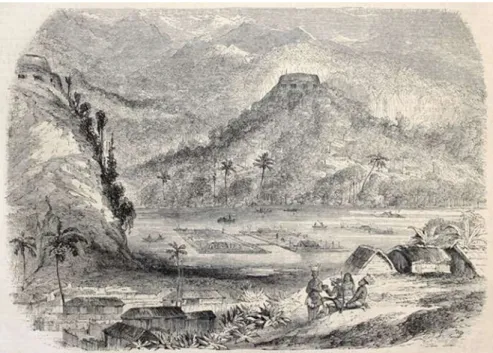
Review of Water Quality Control in RAS
- Dissolved Oxygen (DO)
- Ammonia
- Biosolids
- Carbon Dioxide (CO 2 )
- Total Gas Pressure (TGP)
- Nitrate
- Alkalinity
The packed column aerator (Colt and Bouck 1984) and the low-head oxygenators (LHOs) (Wagner et al. 1995) are examples of liquid-to-gas systems used in recirculating aquaculture. Fernandes et al.2015) and is often used in industry to control both settleable and suspended solids with a single technique.
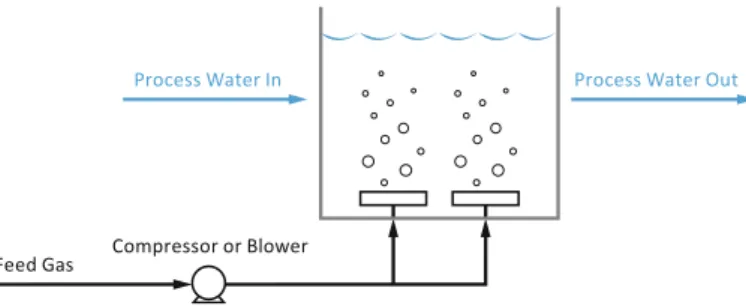
Developments in RAS
- Main Flow Oxygenation
- Nitrifying Bio fi ltration Alternatives
- Fine Solids Control
- Ozonation
- Denitri fi cation
- Microbial Control
- Energy Ef fi ciency
This can lead to savings in oxygen and energy consumption in RAS (van Rijn et al. 2006). Energetic performance analysis of the RAS has been performed by Kucuk et al. 2010) to contribute to the energy management in the RAS.
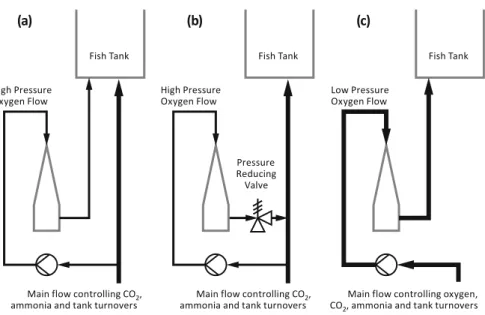
Animal Welfare Issues .1 Introduction
- Stress
- Accumulation of Substances in the Process Water
- Health and Behaviour
- Noise
African catfish (Clarias gariepinus) fed a diet with high supplementation of ascorbic acid (vitamin C) during early development showed a lower stress sensitivity (Merchie et al. 1997). The existence of growth retardation in Nile tilapia (Oreochromis niloticus) by comparing the growth, feeding behavior and stress response of fish reared in the RAS with different levels of accumulated substances (TAN, NO2-N and NO3-N, orthophosphate-P) was demonstrated by Martins et al. Similarly, the accumulation of hormones in cold-water salmonid RAS was studied by Good et al.
Humic acids have also been shown to reduce ammonia and nitrite toxicity (Meinelt et al.2010). Farmed fish are reared for long periods in the same tanks with the same colour(s) and shape and are exposed to the same potentially harmful background noises (Martins et al.2012). Papoutsoglou et al. 2008) provided the first evidence that music transfer under specific culture conditions could have reinforcing effects on S.
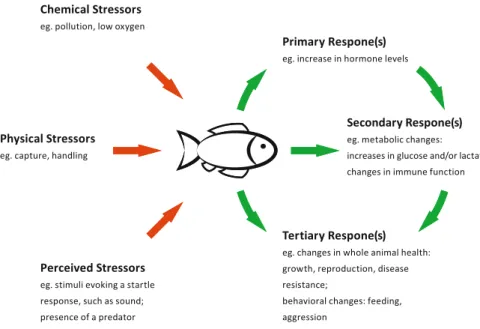
Scalability Challenges in RAS
- Hydrodynamics and Water Transport
- Stock Loss Risk
- Economics
- Fish Handling
The increasing size of RAS operations can also mean an increased risk of financial loss should a catastrophic loss of fish occur. On the other hand, risk mitigation measures and system redundancy can also increase the cost of a RAS project and so designers and engineers must strike a balance between these elements. Aside from industry and media reports, little academic research has been done on the risk of commercial RAS ventures. 2012) surveyed RAS farms and analyzed key technical issues, and found that poor system design, water quality issues, and mechanical issues were the major risk factors affecting RAS viability.
In the future, expensive and strict licenses requiring good environmental performance may increase the viability of RAS as a competitive option for Atlantic salmon production. Despite continued developments on this topic, the increasing size of RAS farms will challenge designers and operators on how to handle fish safely, economically and stress-free. The growing variety of designs, species under production and operational intensity of RAS farms can result in different and new fish transport and harvesting technologies.
RAS and Aquaponics
- Welfare
- Microbial Diversity and Control
Dolan E, Murphy N, O'Hehir M (2013) Factors affecting the optimal selection of microsieve drum filters for recirculating aquaculture systems. Gehlert G, Griese M, Schlachter M, Schulz C (2018) Analysis and optimization of dynamic facility ventilation in recirculating aquaculture systems. Li X, Przybyla C, Triplet S, Liu Y, Blancheton JP (2015) Long-term effects of moderate elevation of oxidation reduction potential on European sea bass (Dicentrarchus labrax) in recirculating aquaculture systems.
Pedersen PB, von Ahnen M, Fernandes P, Naas C, Pedersen L-F, Dalsgaard J (2017) Particle surface area and bacterial activity in recirculating aquaculture systems. Rojas-Tirado P, Bovbjerg Pedersen P, Pedersen L-F (2017) Bacterial activity dynamics in the water phase during start-up of recirculating aquaculture systems. Suhr KI, Pedersen LF, Nielsen JL (2014) End-of-pipe single-sludge denitrification in pilot-scale recirculating aquaculture systems.
Introduction
Closed Loop SystemA. Open Cycle System
- Soilless Systems
- Solid Substrate Systems
- Substrates for Medium-Based Systems
- Characterization of Substrates
- Type of Substrates
- Preparation of Mixed Cultivation Substrates
- Types of Hydroponic Systems According to Water/
- Deep Flow Technique (DFT)
- Nutrient Film Technique (NFT)
- Aeroponic Systems
- Plant Physiology
- Mechanisms of Absorption
- Essential Nutrients, Their Role and Possible Antagonisms
- Nutrient Management in Relation to the Requirements of Plants
- Nutrient Solution Properties
- Water Quality and Nutrients
- Comparison Between Hydroponic and Aquaponic Production
- Disinfection of the Recirculating Nutrient Solution
- Description of Disinfection Methods
- Chemical Versus Non-chemical Methods
- Biofouling and Pretreatment
- Introduction
- A De fi nition of Aquaponics
- General Principles
- Water Sources
- Water Quality Requirements
- Applicable Fish Culture Technologies
- Nutrient Sources
- Aquaponics as an Ecological Approach
- Advantages of Aquaponics
- Introduction
- Tools for Studying Microbial Communities
- Biosecurity Considerations for Food Safety and Pathogen Control
- Food Safety
- Fish and Plant Pathogens
- Microbial Equilibrium and Enhancement in Aquaponics Units
- Bacterial Roles in Nutrient Cycling and Bioavailability
- Suspended Solids and Sludge
- Conclusions
- Introduction
- Historical Development of Coupled Aquaponics
- Coupled Aquaponics: General System Design
- Aquaculture Unit
- Filtration
- Scaling Coupled Aquaponic Systems
- Saline/Brackish Water Aquaponics
- Fish and Plant Choices .1 Fish Production
- Plant Production
- Fish and Plant Combination Options
- Polyponics
- System Planning and Management Issues
- Some Advantages and Disadvantages of Coupled Aquaponics
Water holding capacity is quite poor (10–40%), and much of the retained water is not readily available to the plant (Maher et al. 2008). In an organic substrate (such as coconut), by taking short and frequent watering turns, it is possible to recover the water retention capacity to use it for a second time, more easily than inactive substrates (rock wool, perlite) (Perelli et al.2009). This is one of the reasons why it is increasingly preferred in soilless systems (Olle et al. 2012; Fornes et al. 2003).
To minimize the risk of spreading soil pathogens, disinfection of the circulating nutrient solution is required (Postma et al.2008). Plants, on the other hand, have different nutritional needs than fish, and fish foods rarely, if ever, meet the total nutritional needs of the plants (Rakocy et al. 2006). Therefore, water chemistry and water quality requirements within the aquaponic system are crucial for the ultimate commercial and economic success of the enterprise (Goddek et al.2015).
Therefore, it is generally argued that pH represents one of the biggest water quality trade-offs in aquaponic science (Goddek et al. 2015; Suhl et al. 2016). Separate aquaponic systems may therefore be more attractive due to the perception that they enable more precise delivery of nutrients to plants (Goddek et al. 2016). Independence from soil has been cited as an advantage of the aquaponic method (Blidariu and Grozea 2011; Love et al. 2015a,b).
Other early studies in the USA focused on analyzing the technological functionality and quality of farmed channel catfish and tomatoes (Lewis et al. 1978; Sutton and Lewis 1982).
